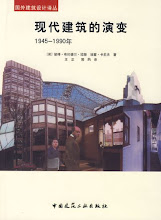Friday 29 August 2014
Tuesday 26 August 2014
'the Spirit of materialism and indifference to beauty': The Post-Industrial Landscape of Post-Modern Manchester 1979-1996
Abstract of a paper to be delivered at the 68th Annual Conference of the Society of Architectural Historians in Chicago April 2015
Manchester’s industrial decline had already taken hold when Margaret Thatcher was elected British prime minister in 1979, but with the city council vehemently opposed to central government policies, it suffered a prolonged recession throught the 1980s and early 1990s. In this period, which ended with the reconstruction process following the I.R.A. bombing of 1996, two new but interlinked phenomena came to prominence which played a significant role in forming the new urban image of Manchester. The first was the desire to transform abandoned industrial areas into cultural, leisure and heritage locations, represented by the multi-layered developments in Castlefield which, adopting a key post-modern concept, became known as an urban palimpsest. The second was the identity developed around the new music scene, first with punk in the late 1970s and then with the opening of the Hacienda club in 1982 when a fashionable industrial aesthetic was confirmed as the language in which urban regeneration would be expressed.
Significant change, however, commenced with a retreat from the radical political agenda of the city council to be more accommodating to government strategy and, following her third election victory in 1987, the Thatcher government’s extension of regeneration strategies to areas of industrial dereliction. The Central Manchester Development Corporation operating until 1997, oversaw redevelopment of a stretch of the city centre, essentially along the course of the Rochdale Canal. Although the concentration was on infrastructure the CMDC was responsible for facilitating the Bridgewater Hall, the city’s new concert hall which represented a shifting of the cultural centre out from the historic core of the city to the former industrial zones.
This period therefore saw a crystallisation of Manchester's contemporary image through the transformation from a counter-cultural appropriation of heritage to its corporate exploitation in new residential and office developments which consciously reinforced the city's industrial image after the disappearance of its manufacturing base.
Manchester’s industrial decline had already taken hold when Margaret Thatcher was elected British prime minister in 1979, but with the city council vehemently opposed to central government policies, it suffered a prolonged recession throught the 1980s and early 1990s. In this period, which ended with the reconstruction process following the I.R.A. bombing of 1996, two new but interlinked phenomena came to prominence which played a significant role in forming the new urban image of Manchester. The first was the desire to transform abandoned industrial areas into cultural, leisure and heritage locations, represented by the multi-layered developments in Castlefield which, adopting a key post-modern concept, became known as an urban palimpsest. The second was the identity developed around the new music scene, first with punk in the late 1970s and then with the opening of the Hacienda club in 1982 when a fashionable industrial aesthetic was confirmed as the language in which urban regeneration would be expressed.
Significant change, however, commenced with a retreat from the radical political agenda of the city council to be more accommodating to government strategy and, following her third election victory in 1987, the Thatcher government’s extension of regeneration strategies to areas of industrial dereliction. The Central Manchester Development Corporation operating until 1997, oversaw redevelopment of a stretch of the city centre, essentially along the course of the Rochdale Canal. Although the concentration was on infrastructure the CMDC was responsible for facilitating the Bridgewater Hall, the city’s new concert hall which represented a shifting of the cultural centre out from the historic core of the city to the former industrial zones.
This period therefore saw a crystallisation of Manchester's contemporary image through the transformation from a counter-cultural appropriation of heritage to its corporate exploitation in new residential and office developments which consciously reinforced the city's industrial image after the disappearance of its manufacturing base.
Saturday 23 August 2014
Wednesday 20 August 2014
Sunday 17 August 2014
Subscribe to:
Posts (Atom)



































































